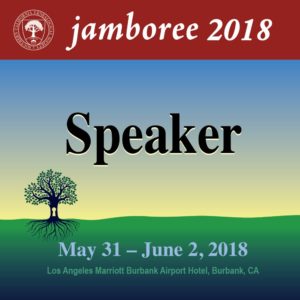Next Thursday is DNA day at the Southern California Genealogy Society’s Jamboree in Burbank, one of my favorite events. I particularly love the outdoor bar restaurant between the hotel and the conference center. Usually the weather is perfect for spending the evening there with friends. If you have been wanting to buy me a glass of wine, here’s your chance!
 Thursday also has a series of free events all day long, including a DNA round table at 5:00 pm with a number of DNA experts at tables. You can come to mine to ask questions about 3rd party DNA tools. [UPDATE 28 May 2018: I should also mention that the exhibit hall with all the main DNA vendors is also free on Thursday but parking is $15]
Thursday also has a series of free events all day long, including a DNA round table at 5:00 pm with a number of DNA experts at tables. You can come to mine to ask questions about 3rd party DNA tools. [UPDATE 28 May 2018: I should also mention that the exhibit hall with all the main DNA vendors is also free on Thursday but parking is $15]
The speakers for the paid DNA day sessions on Thursday, besides myself, include Blaine Bettinger, Leah Larkin, Paul Woodbury, Emily Aulicino, Tim Jantzen, Shannon Christmas, David Nicholson, Daniel Horowitz, Schelly Talalay Dardashti, Diahan Southard, Barbara Rae-Venter, David Dowell, and many more. My sessions are “DNA Segment Triangulation” and Using DNA and GWorks for Unknown Parentage Cases.” Click here for the full schedule.
If you can’t get there, you can sign up for live streaming at http://genealogyjamboree.com/live-streaming-2018/ – sadly it is not free this year, but very inexpensive. In previous years you could buy recordings of many of the sessions, hopefully that will happen this year too.
The main genealogy sessions start Friday morning, but there is at least one DNA related session at every time slot including an “Ask the DNA Experts” at 5pm (and yes I am one of them). Saturday also has plenty of DNA sessions.
Continue reading

